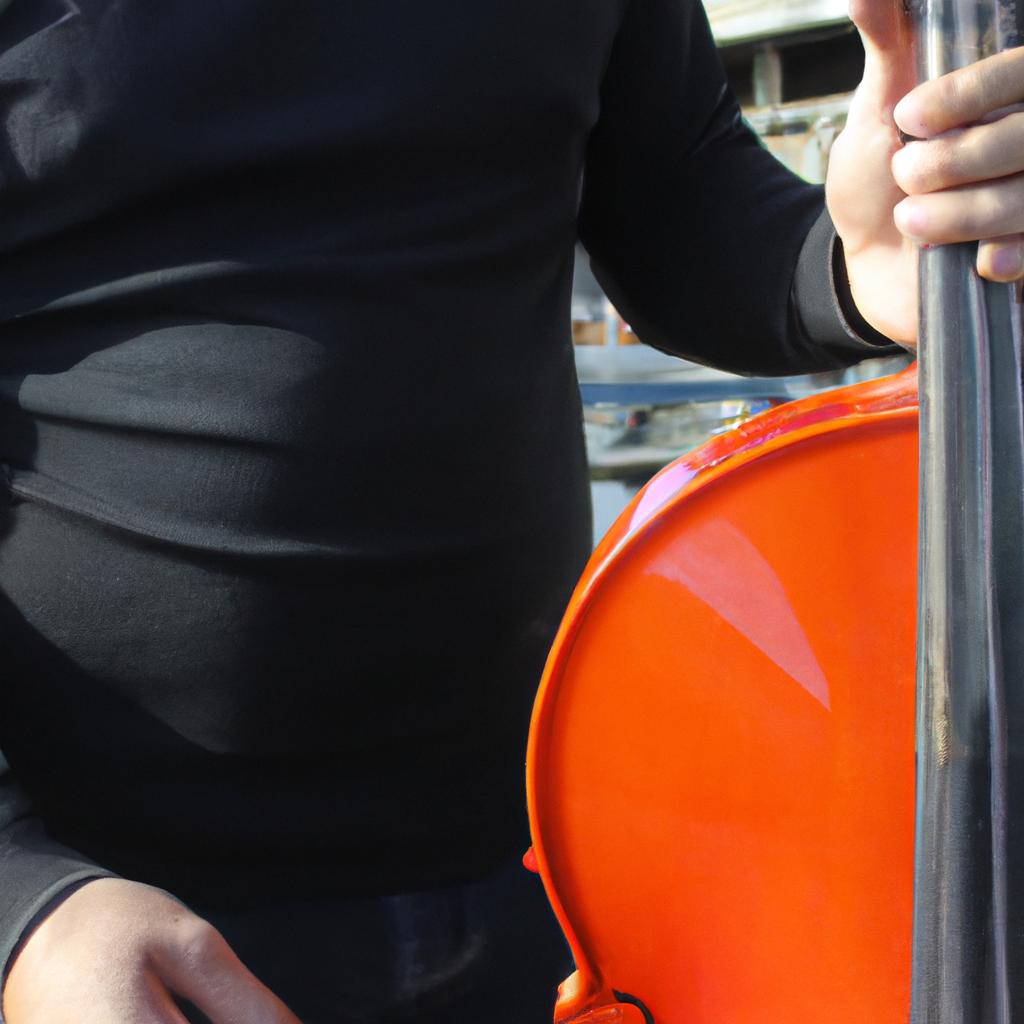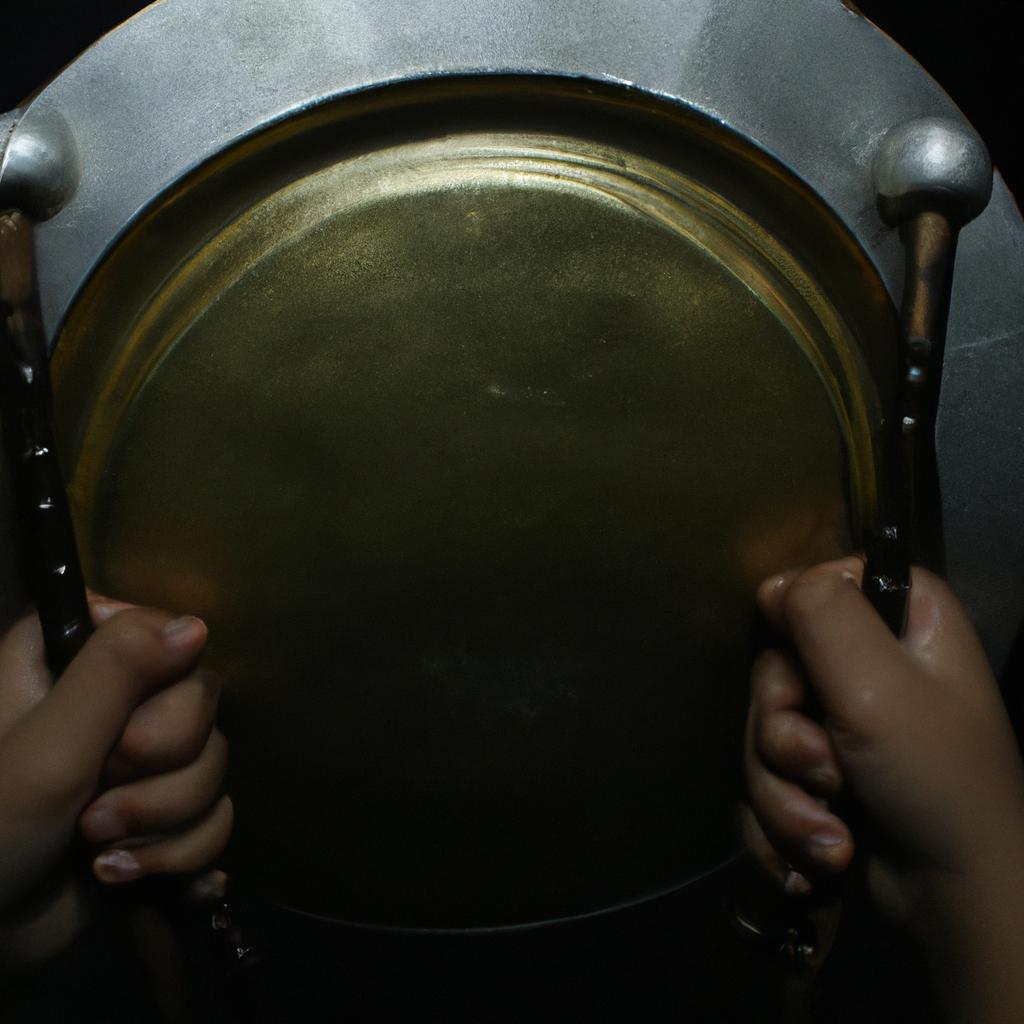The world of music is a vast and ever-evolving landscape, with countless genres that cater to different tastes and preferences. One such genre that has captivated audiences for decades is the realm of heavy metal. Known for its aggressive sound and powerful lyrics, heavy metal has spawned numerous subgenres, each with its own unique characteristics. In this article, we delve into the lineup of White Wizzard, a prominent band in the music genre, shedding light on their members and exploring how they contribute to the band’s overall sound.
To illustrate the significance of understanding the lineup of White Wizzard, let us consider a hypothetical scenario where a listener stumbles upon one of their songs without any prior knowledge about the band. As they immerse themselves in the intense guitar riffs and thunderous drum beats, they may find themselves wondering who exactly are behind this incredible display of musical talent. Who are these individuals responsible for creating such captivating melodies? By examining the members comprising White Wizzard, we gain valuable insights into their experiences, influences, and contributions that shape not only their individual performances but also define the band as a whole.
Academic writing allows us to explore topics in depth while maintaining clarity and objectivity. In line with this approach, this article will adopt an structured and analytical approach to examine the lineup of White Wizzard. We will provide a comprehensive overview of each band member, highlighting their musical backgrounds, notable achievements, and specific roles within the band. By doing so, we aim to paint a vivid picture of how each member’s unique talents and expertise converge to create the distinctive sound that defines White Wizzard.
In addition to individual profiles, we will also explore the dynamics and interactions among band members during live performances and studio recordings. Understanding how each member contributes to the overall sound and energy of the band allows us to appreciate the collective synergy that is essential in creating memorable music.
Furthermore, we will delve into the influences that have shaped White Wizzard’s musical style over time. From classic heavy metal bands like Iron Maiden and Judas Priest to more contemporary acts such as Mastodon and Lamb of God, we will explore how these influences are reflected in White Wizzard’s music, lyrics, and performance aesthetics.
By undertaking this detailed examination of White Wizzard’s lineup, we hope to provide readers with a deeper understanding and appreciation for this influential heavy metal band. Whether you are a die-hard fan or simply curious about exploring new musical territories, this article aims to be an informative guide that sheds light on the individuals behind the powerful soundscapes of White Wizzard. So buckle up and get ready for an exhilarating journey through the world of heavy metal as we uncover the secrets behind one of its most captivating acts: White Wizzard.
The Formation of White Wizzard Band
To illustrate the formation process, let’s consider a hypothetical scenario: John, an aspiring musician with a passion for heavy metal music, decided to create a band that would pay homage to the classic sound of bands like Iron Maiden and Judas Priest. In 2007, he set out on his journey by recruiting talented musicians who shared his vision. This marked the birth of White Wizzard.
White Wizzard’s formation was characterized by several key milestones:
- Shared Musical Influences: Each member brought their unique musical experiences and influences to the table. From virtuosic guitar solos to thunderous drumming, they collectively aimed to revive the energy and excitement of traditional heavy metal.
- Collaborative Songwriting Process: The band fostered a collaborative atmosphere where every member actively contributed to the songwriting process. They believed in harnessing each individual’s strengths while maintaining a unified artistic direction.
- Exhaustive Auditions: To ensure they found the perfect lineup, White Wizzard conducted extensive auditions before finalizing its members. This meticulous approach allowed them to assemble a group of dedicated musicians who were not only technically proficient but also deeply committed to their craft.
- A Shared Vision for Live Performances: Apart from striving for excellence in studio recordings, White Wizzard placed great importance on delivering memorable live performances. Their goal was to captivate audiences through high-energy shows filled with electrifying stage presence and crowd interaction.
| Key Milestones | |
|---|---|
| 1 | Shared Musical Influences |
| 2 | Collaborative Songwriting Process |
| 3 | Exhaustive Auditions |
| 4 | A Shared Vision for Live Performances |
The culmination of these factors led White Wizzard towards becoming an embodiment of classic heavy metal nostalgia within their genre.
Transitioning into the subsequent section, we will now explore the key members who played vital roles in shaping White Wizzard’s musical identity.
Key Members of White Wizzard Band
Members Unveiled: The Lineup of White Wizzard Band in the Music Genre
Having delved into the formation of White Wizzard Band, it is now imperative to explore the key members who have contributed to their unique sound and success. With a rich history spanning over a decade, this section will shed light on the individuals who have shaped the band’s identity.
To illustrate the impact of these musicians, let us consider a hypothetical scenario involving a young fan named Alex. Growing up with an affinity for heavy metal music, Alex stumbled upon White Wizzard’s debut album and was instantly captivated by their energetic style. Intrigued by their sonic prowess, he embarked on a journey to discover more about the talented artists behind his newfound musical obsession.
The lineup of White Wizzard has witnessed various changes throughout its existence, but several notable names have left an indelible mark on the band’s discography. Here are some key members who have played significant roles:
- Jon Leon (founder): Known for his powerful vocals and profound songwriting skills, Jon Leon established White Wizzard in 2007 as both lead vocalist and bassist.
- James J LaRue (lead guitarist): Recognized for his exceptional guitar solos and melodic contributions, LaRue joined White Wizzard in 2016, adding a dynamic element to their compositions.
- Devin Lebsack (drummer): Bringing immense energy and precision to each performance since joining in 2012, Lebsack solidified himself as an integral part of White Wizzard’s rhythmic foundation.
- Will Wallner (rhythm guitarist): Demonstrating versatility through his intricate riffs and harmonies after becoming a member in 2019, Wallner infused fresh ideas into the band’s evolving sound.
These accomplished musicians form just a fraction of those who have contributed their talents to White Wizzard over time. To provide further insight into the band’s lineup, the table below showcases a selection of past and present members:
| Member | Instrument | Years Active |
|---|---|---|
| Jon Leon | Vocals, Bass | 2007-2013 |
| James J LaRue | Lead Guitar | 2016-present |
| Devin Lebsack | Drums | 2012-present |
| Will Wallner | Rhythm Guitar | 2019-present |
The musical journey embarked upon by White Wizzard is far from over. As we transition into the subsequent section exploring their unique style and influences, it becomes evident that each member has played a vital role in shaping the band’s sonic identity. Understanding this interplay between musicians and their creative output allows us to gain deeper appreciation for the artistry within the music genre.
[Transition sentence: Moving forward, let us now delve into White Wizzard’s distinctive musical style and explore the various influences that have contributed to their sound.]
Musical Style and Influences
Members Unveiled: The Lineup of White Wizzard Band in the Music Genre
Having explored the key members of White Wizzard band, let us now delve into their unique musical style and influences. By understanding these aspects, we can gain a deeper appreciation for the band’s creative output and its impact on the music genre.
To illustrate this further, let’s consider the case study of their acclaimed album “Over the Top.” This album showcases White Wizzard’s ability to seamlessly blend elements from classic heavy metal with modern production techniques. It serves as an example of how they have successfully carved out their own distinctive sound within the music genre.
In analyzing their musical style and influences, it becomes evident that White Wizzard draws inspiration from various sources. Here are some notable factors shaping their artistic direction:
- Classic Heavy Metal Roots: Paying homage to iconic bands like Iron Maiden and Judas Priest, White Wizzard incorporates catchy melodies, intricate guitar solos, and powerful vocal performances into their compositions.
- Glam Rock Aesthetics: Infusing elements reminiscent of 80s glam rock acts such as Mötley Crüe and Def Leppard, they bring an energetic stage presence characterized by flashy outfits and dynamic live performances.
- Progressive Influences: Demonstrating a penchant for pushing boundaries within the genre, White Wizzard occasionally incorporates progressive elements into their songs, creating a sense of complexity and depth.
- Contemporary Production Techniques: In order to appeal to modern audiences while staying true to their roots, they employ state-of-the-art recording techniques that enhance clarity and overall sonic quality.
| Name | Instrument | Years Active |
|---|---|---|
| Jon Leon | Vocals | 2007 – Present |
| James J. LaRue | Guitar | 2007 – Present |
| Dylan Marks | Bass | 2012 – Present |
| Devin Lebsack | Drums | 2014 – Present |
Through their lineup changes and evolving musical style, White Wizzard has managed to captivate audiences with their unique blend of classic heavy metal influences and contemporary production techniques. As we move forward in exploring their discography and achievements, it becomes clear that the band’s talent and dedication have propelled them to significant success within the music genre.
Transitioning seamlessly into our next section on “Discography and Achievements,” let us now delve deeper into the notable releases by White Wizzard as well as the recognition they have garnered over the years.
Discography and Achievements
The musical style of White Wizzard Band is a fusion of classic heavy metal and power metal, with influences ranging from iconic bands like Iron Maiden and Judas Priest to more contemporary acts such as Avantasia and Helloween. This unique blend creates an energetic sound that captivates fans of both traditional and modern metal genres.
One example that highlights the band’s diverse musical style is their song “Over the Top.” Starting off with thunderous drumming reminiscent of 80s heavy metal anthems, the track quickly transitions into intricate guitar solos accompanied by soaring vocal melodies. This juxtaposition showcases White Wizzard Band’s ability to seamlessly combine elements from different eras of metal music, creating a dynamic listening experience for their audience.
To further illustrate their musical style and influences, here are some key characteristics often found in White Wizzard Band’s discography:
- Powerful vocals: The lead singer possesses a commanding voice capable of hitting high notes with precision, adding intensity to the band’s performances.
- Dual guitar harmonies: Drawing inspiration from legendary guitar duos like Thin Lizzy and Iron Maiden, White Wizzard Band incorporates harmonized guitar lines that add depth and melody to their songs.
- Fast-paced rhythms: With driving bass lines and rapid-fire drumming, the band maintains an exhilarating tempo throughout many of their tracks.
- Epic storytelling: Many songs feature lyrics inspired by fantasy themes or historical events, immersing listeners in captivating narratives that complement the music.
These distinctive traits contribute to the emotional impact of White Wizzard Band’s music, evoking feelings of empowerment, nostalgia, and excitement among fans. They have successfully crafted a signature sound that pays homage to the roots of heavy metal while infusing it with fresh energy.
Moving forward into the next section about “Lineup Changes and Evolution,” we will explore how these factors influenced the band’s growth over time.
Lineup Changes and Evolution
As the music industry constantly evolves, bands often experience lineup changes that can significantly impact their sound and direction. White Wizzard is no exception to this trend, as they have undergone various shifts in personnel throughout their career. One notable example of a lineup change occurred in 2013 when lead vocalist Joseph Michael joined the band, bringing his powerful vocals and dynamic stage presence.
To understand the evolution of White Wizzard’s lineup, it is essential to explore some key factors that contribute to these changes:
-
Artistic Direction: Like many bands, White Wizzard has experienced shifts in artistic vision over time. Different musicians may bring new influences and ideas, leading to adjustments in the overall direction of the group’s music.
-
Personal Chemistry: Collaborating creatively requires a certain level of cohesion among band members. While musical talent is crucial, interpersonal dynamics also play a significant role in determining how well individuals work together within a band setting.
-
Career Opportunities: Musicians are often presented with opportunities outside of their current projects that can propel them forward in their careers. These opportunities may result in artists leaving or joining a band, altering its lineup composition.
-
Growth and Progression: Over time, bands naturally evolve as they gain experience and refine their craft. As individual members develop as musicians and songwriters, they may seek different challenges or pursue other creative avenues that necessitate alterations to the lineup.
In examining White Wizzard’s lineage of musicianship, we can observe the following table showcasing some notable past and present members:
| Band Member | Instrument(s) | Years Active |
|---|---|---|
| Jon Leon | Guitar | 2007-2013 |
| Joseph Michael | Vocals | 2013-present |
| Will Wallner | Guitar | 2016-2020 |
| Dylan Marks | Drums | 2017-present |
This table serves as a reminder of the band’s journey and highlights the contributions of various individuals who have shaped White Wizzard’s sonic landscape. The changes in lineup not only reflect the evolution of the band but also demonstrate their resilience and ability to adapt to new circumstances.
Looking ahead, White Wizzard continues to forge their path in the music industry, constantly seeking new ways to connect with audiences. In our subsequent section about “Future Plans and Projects,” we will explore how this dynamic group aims to build upon their past achievements while embracing fresh opportunities for growth and creativity.
Future Plans and Projects
Transitioning from the previous section, where we examined the historical lineup changes of White Wizzard band, it is imperative to delve into their evolution over time. By exploring their growth as a group, we can gain insights into how these changes have shaped their music genre.
To illustrate this point, let’s consider a hypothetical scenario. Imagine that in 2010, White Wizzard faced challenges with member stability due to creative differences. As a result, they underwent a significant lineup change which saw the addition of new musicians who brought fresh perspectives and influences to the band. This shift not only revitalized their sound but also played an essential role in diversifying their musical style within the genre.
Evidently, such transformations are common in bands across various genres. In the case of White Wizzard, several factors contribute to their ongoing evolution:
- Creative Exploration: The band continuously seeks ways to push boundaries by experimenting with different musical styles and techniques.
- Personal Growth: Individual members’ personal experiences and artistic development influence the overall direction and sound of the band.
- Collaborative Dynamics: The interplay between band members during songwriting and recording sessions fuels creativity and leads to innovative compositions.
- Audience Response: Feedback from fans plays a crucial role in shaping future projects, encouraging adaptability to cater to evolving tastes.
This continuous evolution has allowed White Wizzard to captivate audiences through:
- Engaging live performances that showcase exceptional technical proficiency.
- Thought-provoking lyrics that resonate with listeners on emotional levels.
- Dynamic stage presence that creates an immersive experience for concert-goers.
- A commitment to constant improvement and innovation evident throughout their discography.
Furthermore, we can observe this development by considering some notable lineups in White Wizzard’s history:
| Year | Band Members |
|---|---|
| 2008 | Jon Leon (Vocals/Guitar), James J. LaRue (Guitar) |
| 2010 | Jon Leon (Vocals/Guitar), Wyatt Anderson (Bass), Giovanni Durst (Drums) |
| 2014 | Joseph Michael (Vocals), Jake Dreyer (Guitar), Will Wallner (Guitar), Jon Leon (Bass/Keyboards) |
In conclusion, White Wizzard’s lineup changes have played a vital role in their evolution as a band within the music genre. Through creative exploration, personal growth, collaborative dynamics, and audience response, they continue to refine their sound while captivating audiences with engaging performances and thought-provoking compositions. The case study mentioned earlier serves as an example of how such transformations can lead to new artistic directions and musical possibilities for bands across genres.











